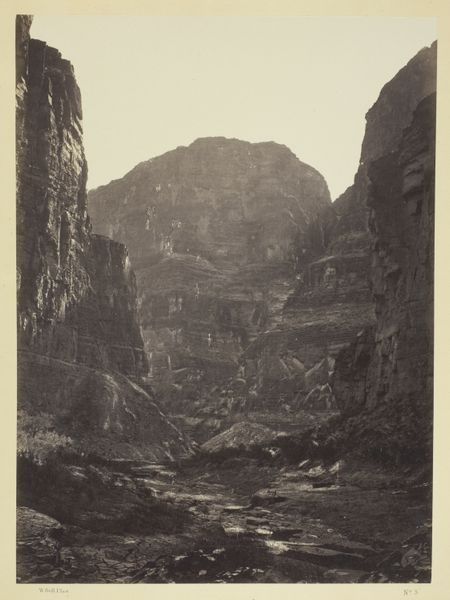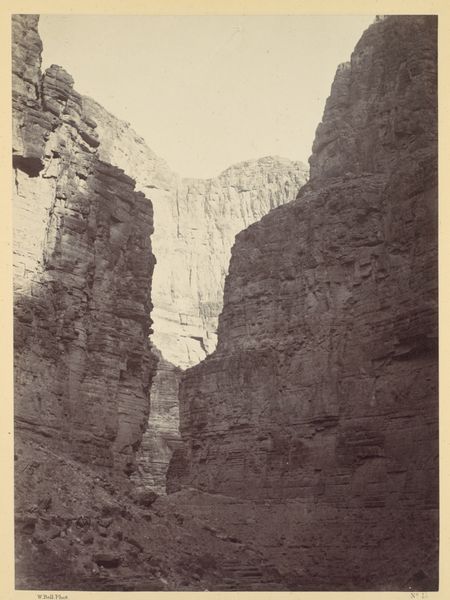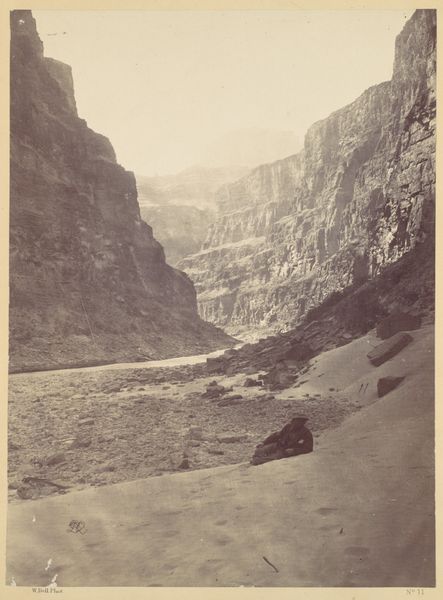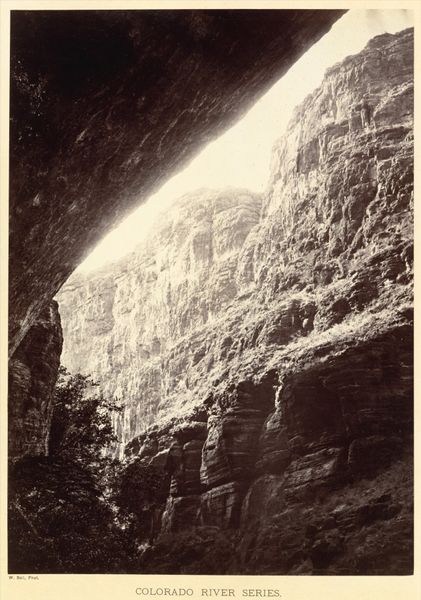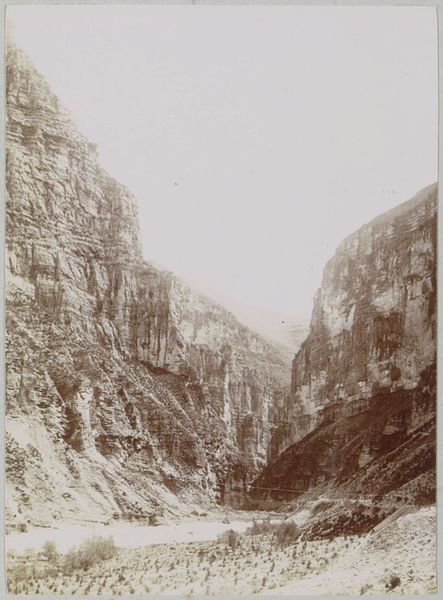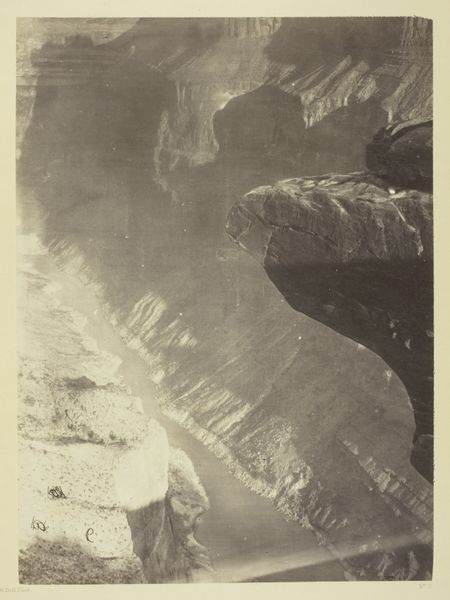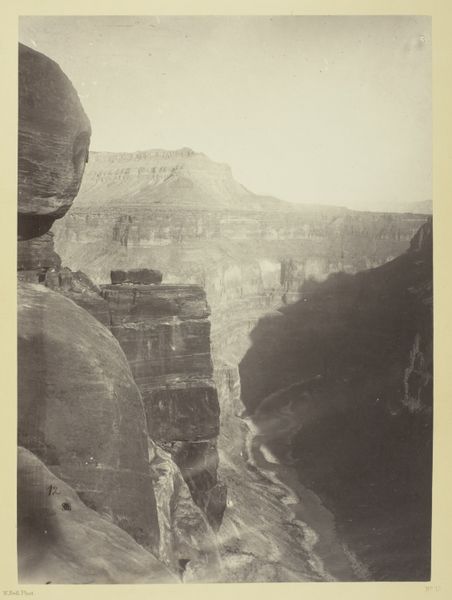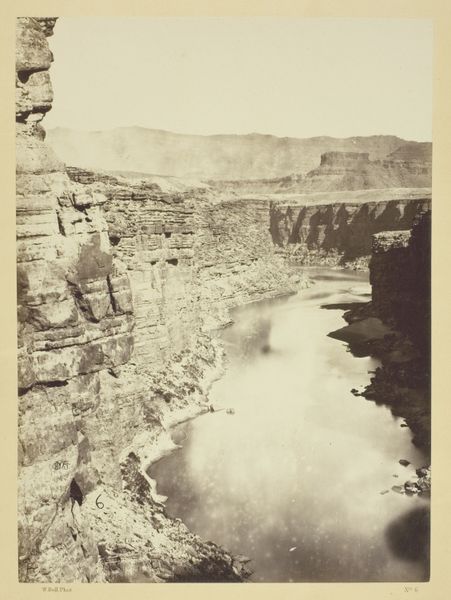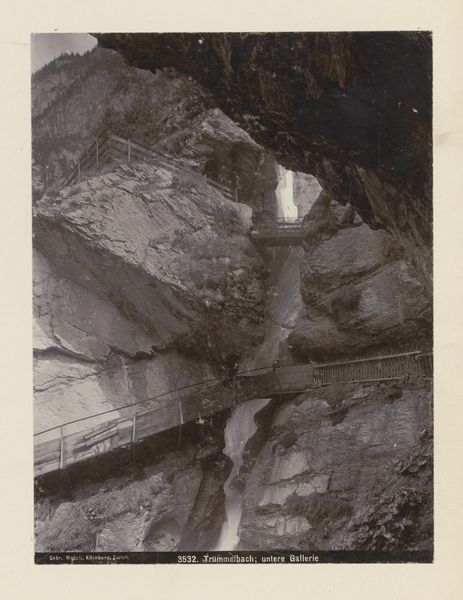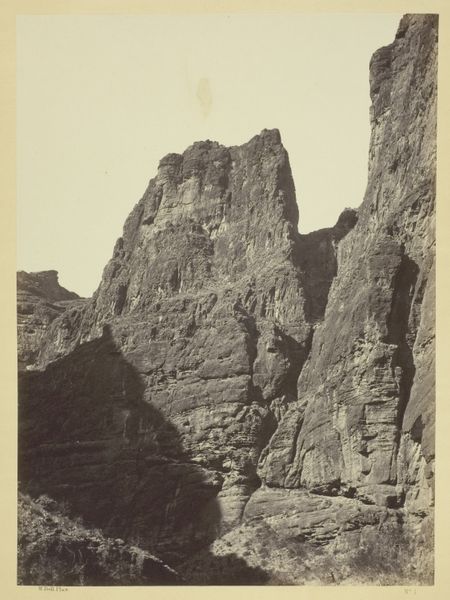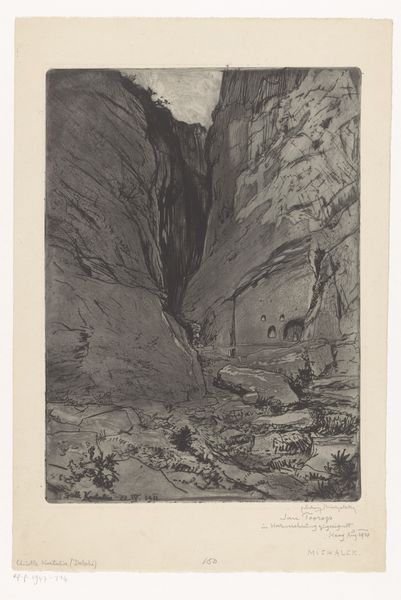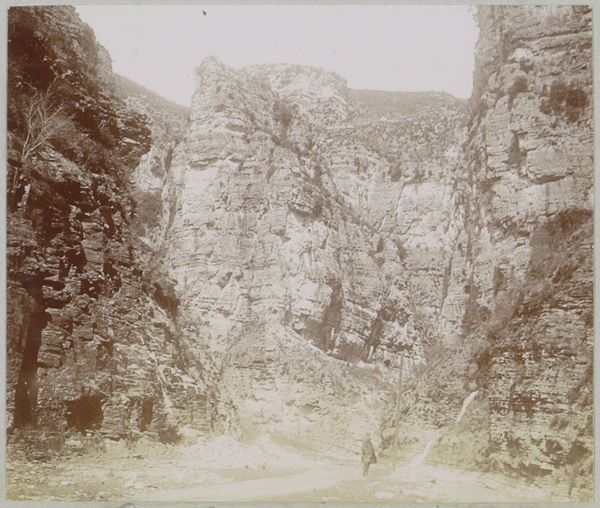
print, photography
#
16_19th-century
# print
#
war
#
landscape
#
photography
#
hudson-river-school
#
19th century
#
united-states
#
realism
Dimensions: 27.6 × 20.2 cm (image/paper); 50 × 39.4 cm (mount)
Copyright: Public Domain
Editor: This is William Bell’s 1872 photograph, "Cañon of Kanab Wash, Colorado River, Looking North." It's stunning, though somewhat monochromatic. The scale feels immense, especially looking up into that sliver of sky between the canyon walls. What do you see in this piece from a formal perspective? Curator: Precisely that vertical thrust. The artist masterfully exploits the inherent tension between the static weight of the massive stone and the implied dynamism of its upward reach. Observe how the composition is structured through a play of light and shadow, the graded tones articulating the geological strata. Note how Bell uses linear perspective not for illusionistic depth but to accentuate verticality, thus emphasizing the canyon's structure as a monumental form. Editor: So you're focusing on the way the picture is put together, rather than what it represents? Curator: The "what" emerges from the "how". Semiotically, the stark contrasts between light and dark can be viewed as a binary opposition, a recurring structural motif. Ask yourself how the photograph engages with earlier traditions of landscape painting. Where do we find evidence of the Hudson River School’s influence on Bell's choices about composition, light, and tonal contrast? Is Bell simply documenting a location, or is he actively constructing an experience for the viewer through these techniques? Editor: I see what you mean. The stark contrast definitely creates a feeling of… austerity, maybe even sublimity. It's more than just a picture of a canyon. Curator: Exactly. Bell is presenting an arrangement of formal qualities: line, light, and tonality. Consider too, the texture—the roughness of the rock faces captured with incredible detail given the photographic technology of the time. What does this materiality communicate? It provides grounding and contrast with the atmospheric perspective towards the vanishing point. Editor: That's a lot to think about! I appreciate you pointing out how the different formal elements come together to shape our experience. Curator: My pleasure. These types of questions enable a greater appreciation of the artistic intention behind this compelling vista.
Comments
No comments
Be the first to comment and join the conversation on the ultimate creative platform.
